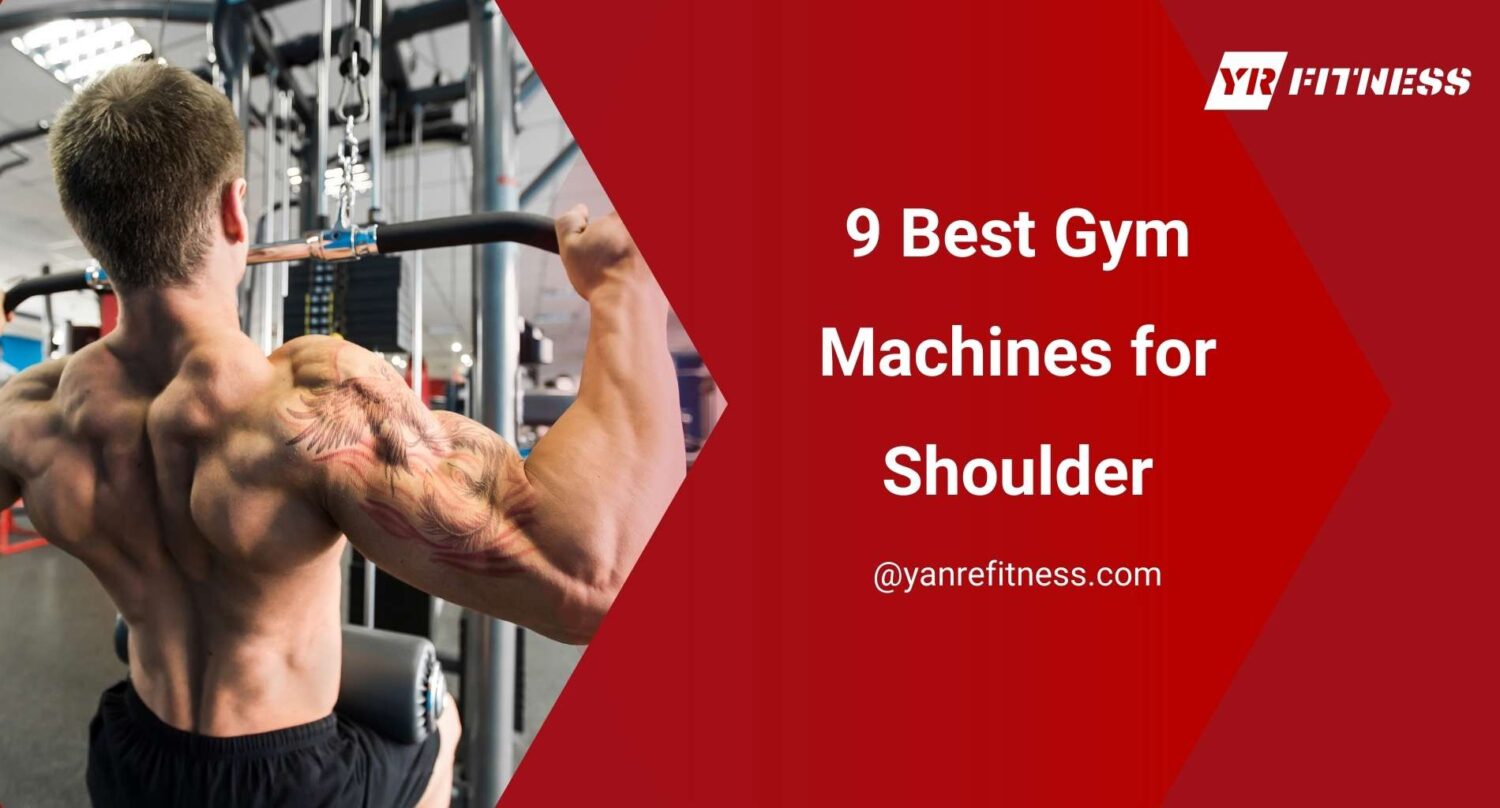I still remember walking into a new gym and heading straight for the shoulder machines. They looked clean, solid, professional.
But after just two reps, I knew something was off.
No real resistance. No muscle engagement. Just awkward movement that didn’t feel right.
That’s the issue with a lot of shoulder machines—they look good on the floor but don’t deliver during a workout.
Over the years, I’ve tested shoulder equipment in real gym settings. I’ve spoken with owners, trainers, and members. I’ve seen which machines stay in use—and which ones collect dust.
If you’re setting up or upgrading your gym, you don’t want gear that just takes up space. You want machines that feel right, get results, and keep people coming back.
In this guide, I’ll break down 9 shoulder machines that actually do the job. You’ll learn how they work, who they’re best for, and what to look out for before buying.
So let’s begin!
Table of Contents
- Quick Comparison Chart
- 1. Seated Shoulder Press Machine
- 2. Lateral Raise Machine
- 3. Rear Delt / Pec Fly Machine (Dual Use)
- 4. Smith Machine (for Overhead Press Variations)
- 5. Cable Functional Trainer with Shoulder Attachments
- 6. Plate-Loaded Iso-Lateral Shoulder Press
- 7. Standing Overhead Press Machine
- 8. Viking Press Machine
- 9. Shoulder Shrug Machine
- Conclusion
Quick Comparison Chart
Before we dive deeper into each machine, this chart gives you a quick overview. It highlights key details to help you start comparing them side by side.
Machine Name | Type | Main Focus | Best For | Size |
Seated Shoulder Press | Selectorized / Plate-Loaded | Deltoids, Triceps, Upper Traps | All gym types, beginners to intermediate | Medium (4×5 ft) |
Lateral Raise Machine | Selectorized | Side Delts | Aesthetic gyms, beginners | Small (3×4 ft) |
Rear Delt / Pec Fly Machine | Selectorized | Rear Delts, Chest | Balanced training, posture work | Medium (4×5 ft) |
Smith Machine (Overhead Press) | Plate-Loaded | Full Shoulder Pressing | Strength gyms, solo lifters | Large |
Cable Functional Trainer | Selectorized (Cable) | Multi-angle Shoulder Work | PT studios, all levels, rehab | Medium-Large |
Iso-Lateral Shoulder Press | Plate-Loaded | Strength, Realistic Push Path | Advanced lifters, symmetry focus | Medium-Large |
Standing Overhead Press Machine | Selectorized | Delts + Core + Stabilizers | Functional and sports gyms | Compact |
Viking Press Machine | Plate-Loaded | Athletic Angled Pressing | Strongman or functional training gyms | Large |
Shoulder Shrug Machine | Plate/Selectorized | Traps, Upper Shoulders | Strength gyms, posture and trap focus | Compact |
Now that you’ve seen the comparison, it’s time to get into the full breakdowns.
1. Seated Shoulder Press Machine
I walked into a gym for a consult and spotted a brand-new seated shoulder press machine. It looked great—but no one was using it. I gave it a try. The motion was clunky. The handles were too wide. That’s when I realized: how a machine feels matters way more than how it looks. At YR Fitness, we make sure our seated shoulder press machines aren’t just good to look at—they feel right during every rep.
Most of our seated shoulder press machines are selectorized, letting you adjust the weight by sliding a pin into a built-in stack. We also offer plate-loaded options for those who want a free-weight feel, even though they take a little longer to set up between sets.
Key Features
- Adjustable seat height: aligns the user’s shoulders with the handles
- Multiple grip options: helps reduce shoulder strain and lets users target different angles
- Smooth pressing motion: makes the movement feel natural and safe
- Supportive backrest: keeps the user stable during heavy reps
- Compact footprint: needs around 4×5 feet of space
Best For
- Commercial gyms with all experience levels
- Beginners who need safe, guided shoulder work
- Gyms that serve older adults or rehab clients
Target Muscles
- Deltoids: the main shoulder muscles that shape your upper body
- Triceps: the muscles on the back of your upper arms
- Upper traps: muscles along the top of your shoulders and neck
Final Take
The seated shoulder press is one of the most dependable machines for building upper-body strength. It’s easy to use, works well for most people, and fits into almost any gym setup. When it feels good to use, your members will keep coming back to it.
2. Lateral Raise Machine
You’ve probably tried dumbbell lateral raises before and felt unsure if you were doing them right. Maybe your traps took over. Maybe it just didn’t feel smooth. I’ve been there too—and so have most people I’ve coached.
That’s why I always recommend the lateral raise machine. It’s selectorized, so you just slide in a pin to choose your weight. The movement is clean and controlled, which helps you actually feel your side delts working—no momentum, no guesswork. It’s one of the easiest ways to train for real shoulder shape.
Key Features
- Adjustable arm pads: fits users of different body sizes comfortably
- Independent arm movement: lets both arms move separately for better control
- Smooth resistance path: helps avoid jerky motion and protects the shoulder joint
- Easy access frame: users can sit or stand depending on the model
- Compact footprint: needs around 3×4 feet of space
Best For
- Aesthetic-focused gyms or physique training
- Beginners who struggle with dumbbell form
- Small gyms or studios needing space-efficient machines
Target Muscles
- Lateral deltoids: the outer part of your shoulders that adds width
- Upper traps: muscles near your neck that support the movement slightly
Final Take
The lateral raise machine is a favorite for shaping strong, defined shoulders. It’s easy to use, doesn’t take much space, and helps users feel the right muscles working. While it’s not built for heavy lifting, it’s one of the most effective tools for side delt isolation. A smart, space-friendly choice for gyms that focus on results and real shoulder development.

3. Rear Delt / Pec Fly Machine (Dual Use)
You’ve probably seen this machine in most gyms—two big arms with handles that swing out and in. Maybe you’ve used it for chest. Or maybe for rear delts. Either way, it’s one of those machines that’s easy to overlook—but incredibly useful when used right.
This is a dual-function selectorized machine. That means you adjust a pin to choose your weight, and shift the arms to switch between chest fly (pushing forward) and rear delt fly (pulling back). It combines two machines into one—great for saving space without losing function.
Key Features
- Dual function setup: easily switches between pec fly and rear delt fly
- Adjustable seat and arms: fits users of different sizes and limb lengths
- Comfortable chest/back pads: gives support during both pushing and pulling movements
- Smooth arm pivot: reduces joint stress and keeps movement fluid
- Space-saving footprint: about 4×5 feet, ideal for smaller gyms
Best For
- Commercial gyms needing more value per machine
- Beginner to intermediate users
- Gyms that want to train both front and back shoulders effectively
Target Muscles
- Rear deltoids (back of the shoulder) when doing the reverse fly
- Pectorals (chest muscles) when doing the chest fly
- You’ll also activate some upper back and shoulder stabilizers during rear delt mode
Final Take
The rear delt/pec fly machine pulls double duty in the best way. It trains front and back evenly, helps reduce muscular imbalances, and fits into tight floor plans. It’s not a strength-building powerhouse, but for clean isolation and joint-friendly training, this one’s a must-have. Members love versatility. You’ll love how much function it delivers in one compact machine.
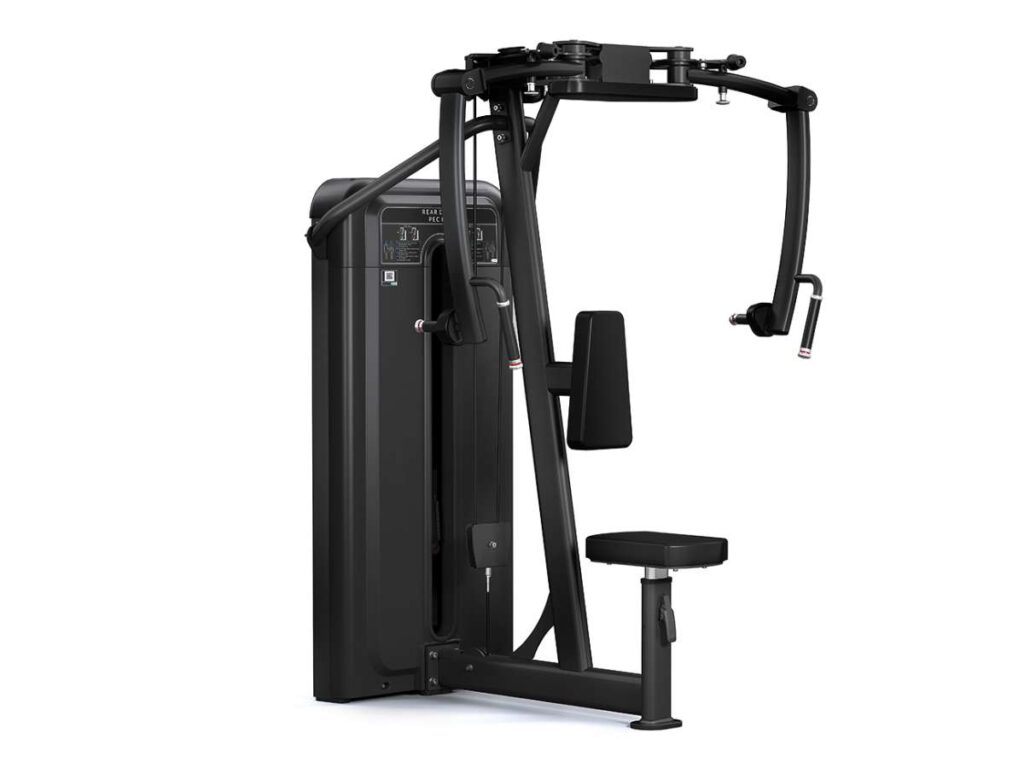
4. Smith Machine (for Overhead Press Variations)
You’ve probably used a Smith machine for squats or bench press. But overhead presses? That’s where it gets really useful. I’ve worked with clients who didn’t feel stable using a barbell. Once they switched to the Smith, they felt safer—and more confident.
This is a plate-loaded machine. You load weight plates onto each side, and the bar moves along fixed rails. That helps keep the bar steady. It’s great for building shoulder strength when you don’t have a spotter.
Key Features
- Fixed bar path: helps keep movement stable and controlled
- Adjustable safety catches: lets you lock the bar at different heights
- Smooth bar glide: makes overhead pressing feel natural
- Sturdy steel frame: built to handle heavy weight loads
- Multi-use design: works for pressing, squats, rows, and more
Best For
- Strength-based commercial gyms
- Gyms without many spotters or staff
- Beginners learning safe overhead pressing
- Advanced lifters train heavily on their own
Target Muscles
- Deltoids: mostly front and side shoulders
- Triceps: helps lock out the press
- Upper chest and traps: depending on bar path and grip
Final Take
The Smith machine may not be free-moving like a barbell, but that’s its strength. It offers structure and safety. For overhead presses, it gives you control, helps reduce injury risk, and supports solo training. In any gym focused on strength, this machine is a smart and reliable choice.
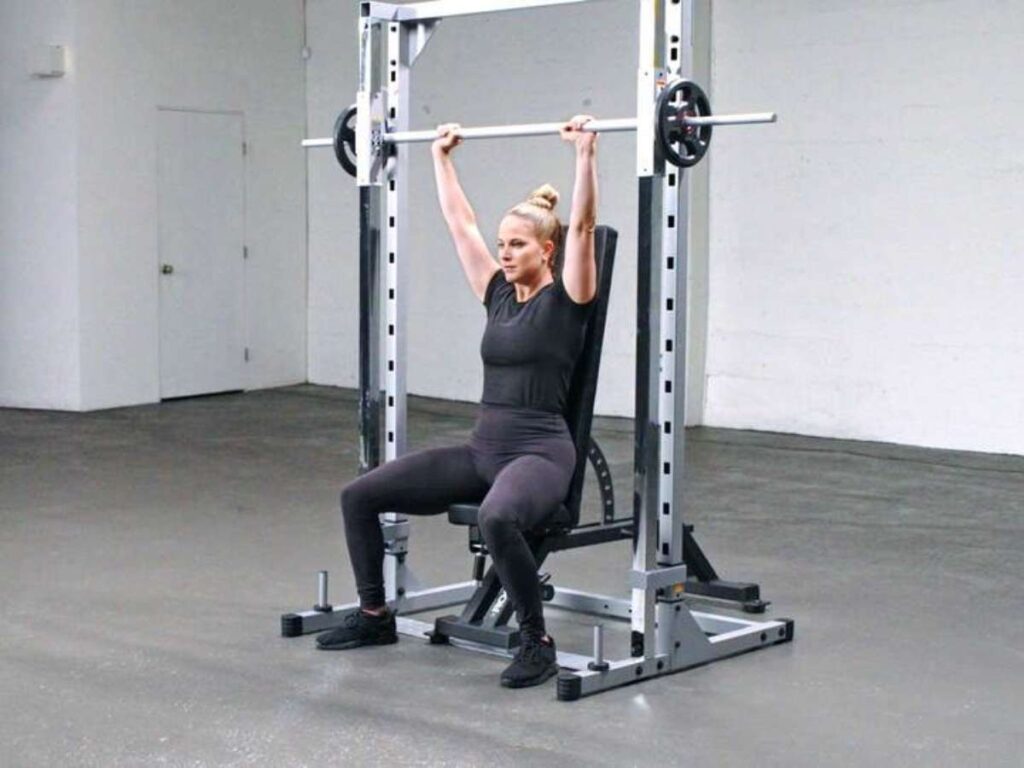
5. Cable Functional Trainer with Shoulder Attachments
There’s something satisfying about the feel of cable resistance. Smooth tension. Constant pull. That controlled burn that locks right into your shoulder muscles. I’ve watched clients go from stiff and unsure to fluid and confident—all thanks to this machine.
This is a selectorized cable system with adjustable arms and interchangeable attachments. You move through a full range of motion while keeping tension steady. It’s great for presses, raises, pulls—just about every angle your shoulder moves. That’s why it’s a favorite for both training and rehab work.
Key Features
- Adjustable pulley arms: move up and down for custom exercise angles
- Swiveling joints: allow natural movement without locking you into a fixed path
- Attachment variety: includes single handles, bars, ropes, and more
- Smooth cable system: gives even resistance from start to finish
- Open design: leaves space for full-body movement or seated work
Best For
- Commercial gyms serving all skill levels
- Personal training studios
- Rehab programs and mobility-focused sessions
- Athletes who need dynamic shoulder work
Target Muscles
- Deltoids: all three heads—front, side, and rear
- Trapezius: especially in pull movements
- Rotator cuff: engaged during stabilization and control work
Final Take
The cable functional trainer brings variety, safety, and full control to shoulder training. With the right attachments, you can train every angle of the shoulder smoothly, even resistance. It’s one of the most useful tools for beginners, trainers, and athletes alike. If your goal is to give users flexible, all-in-one shoulder work—this machine delivers.
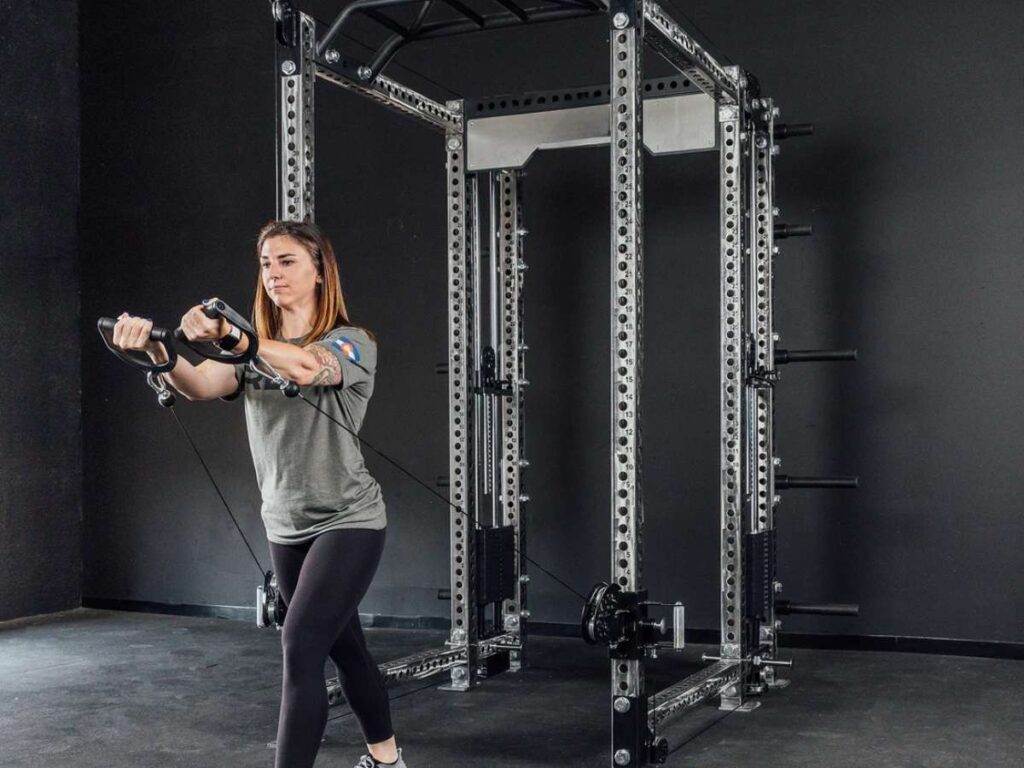
6. Plate-Loaded Iso-Lateral Shoulder Press
“This feels like I’m actually pushing something—not just moving a machine.”
That’s what one of my clients said after trying the iso-lateral shoulder press for the first time. I knew exactly what he meant. I remember the first time I used it too—pressing forward and up with both arms moving freely. It just felt more real.
This is a plate-loaded iso-lateral machine. That means you load plates on each side manually. Each arm moves on its own path, so both shoulders work independently. This helps build balanced strength and mirrors the way your body naturally moves.
Key Features
- Independent arm movement: each side presses separately for better symmetry
- Natural push angle: mimics how you press in real-life motion
- Heavy-duty frame: holds lots of weight for strength training
- Wide handle grip: supports different shoulder widths
- Large base: gives extra stability during heavy reps
Best For
- Strength-focused gyms or training zones
- Intermediate to advanced lifters
- Clients working on muscle balance or rehab
- Athletes do sport-specific pushing patterns
Target Muscles
- Deltoids: mostly front and middle
- Triceps: for lockout and push
- Upper chest: activated when pushing at an upward angle
Final Take
The iso-lateral shoulder press machine gives you the best of both worlds—realistic movement and heavy resistance. It’s not the fastest setup since you need to load plates, but the payoff is big. It teaches your shoulders to work independently and builds strength you can use outside the gym. A solid pick for serious lifters and athletes alike.
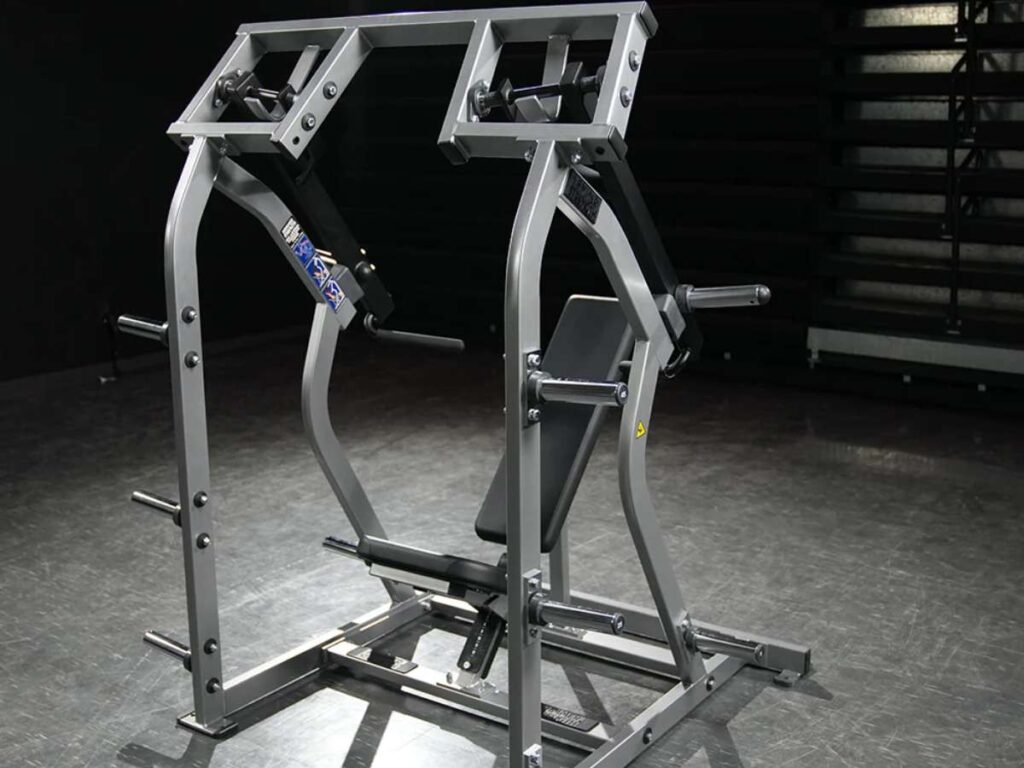
7. Standing Overhead Press Machine
Most people don’t expect to feel their abs fire up during a shoulder press. That’s what makes this machine such a surprise. I remember watching a client press overhead on it for the first time. Mid-set, they paused and said, “Wait, I can feel this in my core too.” That’s the beauty of standing presses—you train more than just your shoulders.
This is a selectorized machine designed for standing overhead work. It has a weight stack with a pin system and upright handles at shoulder height. You press the weight overhead without a seat or backrest, which brings in your core and stabilizers.
Key Features
- Standing frame: encourages better posture and core engagement
- Selectorized stack: easy to adjust resistance with a simple pin
- No backrest: makes your body do the stabilization
- Rotating or fixed handles: supports natural shoulder motion
- Compact base: takes up less space than most press machines
Best For
- Athletic and performance gyms
- Functional fitness training zones
- Clients working on core stability
- Intermediate lifters wanting to press without sitting
Target Muscles
- Deltoids: front and middle heads
- Triceps: active at the top of the press
- Core muscles: stabilizing your body through the entire set
Final Take
The standing overhead press machine adds a new layer to shoulder training. It promotes full-body coordination in a compact, simple setup. It may not be for max strength work, but for posture, control, and core activation—it’s hard to beat. A smart addition to gyms that train beyond the basics.
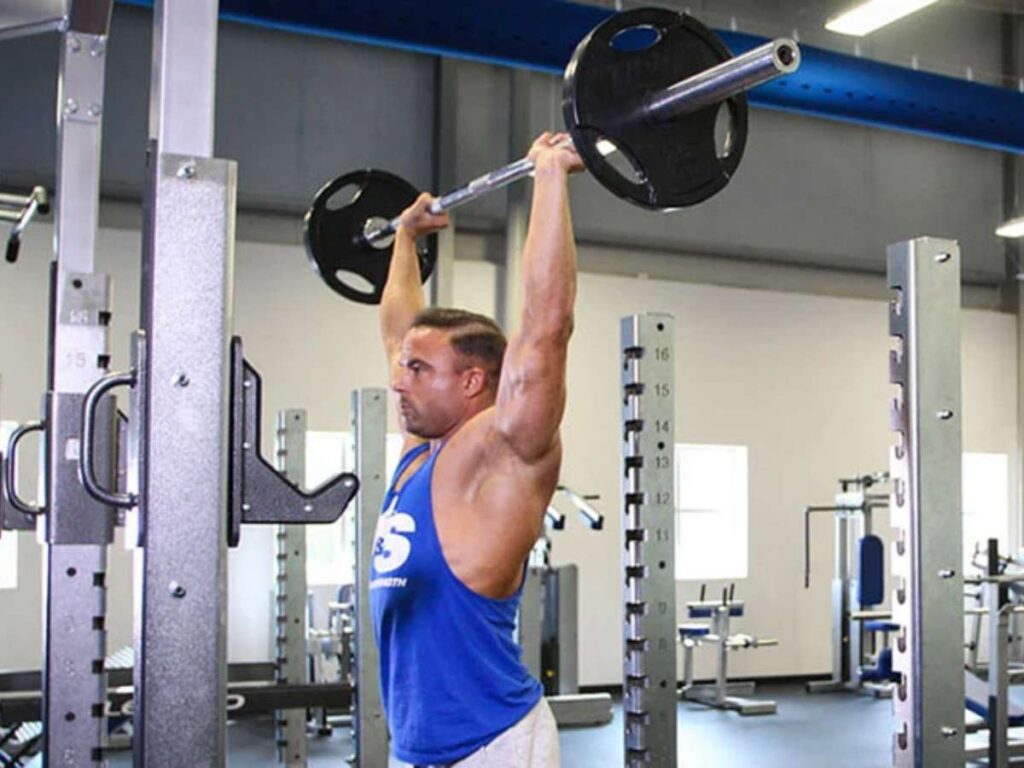
8. Viking Press Machine
Ever tried pressing weight at an angle that feels like both a push and a lift? That’s exactly what this machine delivers. One of my clients called it, “the most real-world press I’ve ever felt.” And they were right—it mimics the kind of strength used in sports and daily life.
This is a plate-loaded machine. You stack weight plates on each side, and the handles move in a slight arc—part vertical, part horizontal. It’s based on the Viking press used in strongman events. Great for training shoulders in a more athletic, standing position.
Key Features
- Angled pressing path: combines upward and forward movement
- Plate-loaded system: gives more loading options for strength work
- Wide neutral grip handles: supports shoulder-friendly pressing
- Standing position: activates full-body coordination
- Large footprint: needs open space, especially for loading plates
Best For
- Strength-focused gyms and functional areas
- Athletes or sport-specific training
- Intermediate to advanced lifters
- Lifters working on explosive shoulder power
Target Muscles
- Deltoids: especially front and middle
- Triceps: assist with the final push
- Upper chest and traps: help support the lift in standing position
Final Take
The Viking press machine isn’t your average shoulder press. It trains strength at an angle that feels more like sport—and life. It takes up more space and needs plate loading, but the payoff is strong. For gyms focused on athletic development or real-world power, this machine adds serious value to the shoulder lineup.
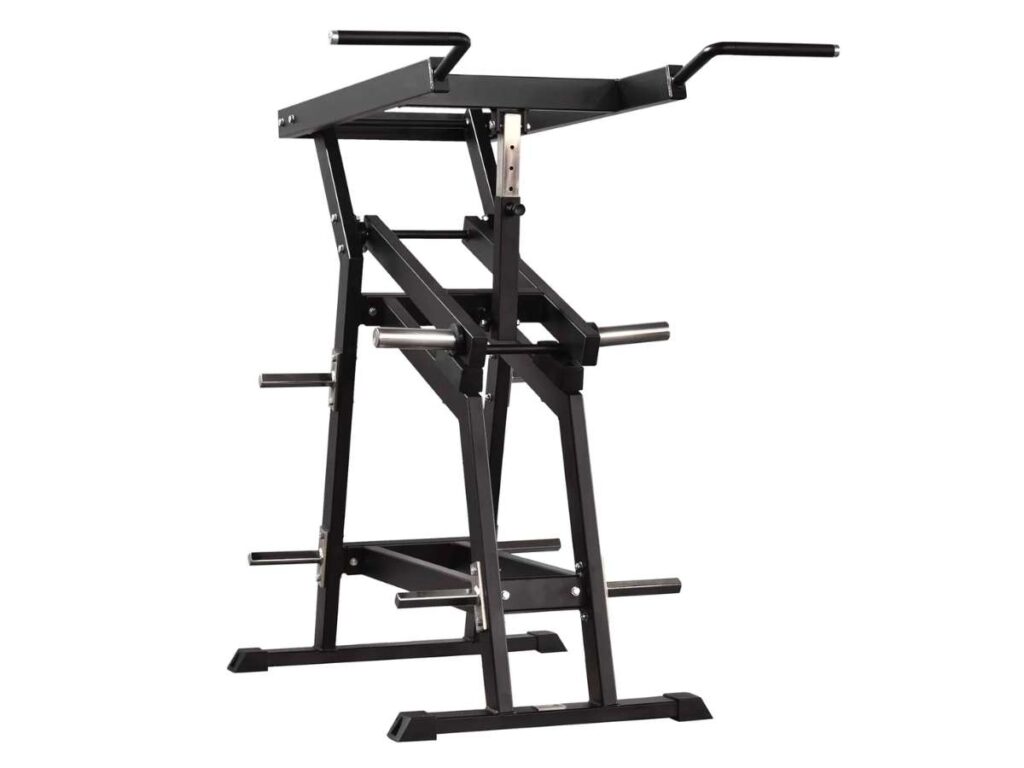
9. Shoulder Shrug Machine
One day, a client came to me frustrated. “No matter how heavy I go, I don’t feel my traps doing the work,” he said. I watched him shrug with dumbbells—his arms were swinging, posture collapsing. We moved to the shrug machine. After just one set, he smiled and said, “That’s the burn I’ve been chasing.”
At YR Fitness, our shrug machines come in plate-loaded or selectorized models. They’re built to help you grip strong, stand tall, and isolate the trapezius for true upper-back strength.
Key Features
- Neutral grip handles: keep wrists comfortable and aligned
- Vertical pull path: encourages strict trap activation
- Compact frame: easy to fit into most gym spaces
- Selectorized or plate-loaded: gives flexibility based on gym needs
- Stable platform: keeps feet grounded during heavy lifts
Best For
- Strength and bodybuilding gyms
- Lifters focused on trap growth and posture
- Beginner to advanced users
- Anyone rehabbing from shoulder instability
Target Muscles
- Trapezius: especially upper traps near the neck
- Deltoids: offer support during movement
- Forearms and grip: activated during heavy lifts
Final Take
The shoulder shrug machine helps you isolate a key part of the upper body without sloppy form. It’s small, direct, and powerful—great for lifters chasing size or better posture. Whether you’re training for looks, performance, or injury prevention, this machine is a smart and focused addition to your shoulder lineup—much like targeted lower-body machines are essential for legs and glutes.
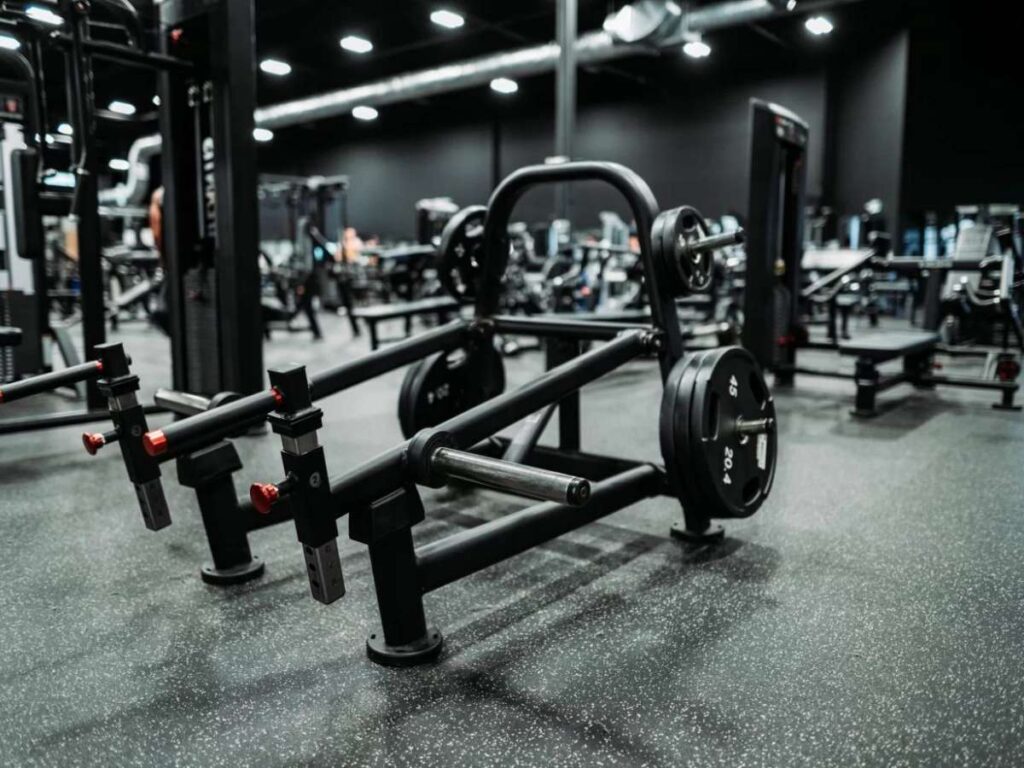
Conclusion
We just broke down 9 of the best shoulder machines—what they do, who they’re for, and how they fit. From functional trainers to trap builders, you’ve got the tools to make the right decision.
This isn’t just about equipment—it’s about building trust with your members. Giving them something that works. Helping them feel results in every rep.
Now’s the time to take action.
Which one will you add to your floor first?
Contact us today—we’ll guide you through it.
Related articles:
